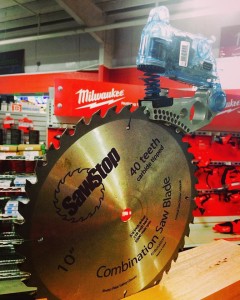Power tools are one of the most necessary, and also most unforgiving things that a DIYer, Hobbyist, or Professional will work with on a regular basis. Whether you are on a jobsite, inside, outside, or in your own garage — Safety should always be #1. The tools that we all use, help us get the job done quickly, cleanly, and efficiently — but they also can hurt us in an instant.
Table Saws are one of the most dangerous of any power tools. If you are unsure, uneasy, or not properly trained — it would be advised to not use them until you can do so safely. Things like loose fitting clothing, a non-sturdy work-surface, or simply getting in a rush can create a dangerous situation. Having a blade spinning at 3,000+ RPMs doesn’t create a lot of room for error.
One solution out there is the Sawstop table saw. It has a unique system built in to help prevent most accidents — specifically you cutting yourself — and allowing you to walk away with hurt pride -vs- a major injury.

It does so by having a specialized cartridge physically jamb into the spinning saw blade — absorbing the force & preventing you from losing a finger!
If you are familiar with tools in general, and especially woodworking — then you most likely have already seen the standard “Sawstop Demo”, where they very slowly feed a board with a hot dog on top (representing a finger) into the Sawstop Table Saw. As soon as the hot dog touches the blade, the saw instantly stops the blade — preventing a major injury (and barely scratching the hot dog). While this is a good representation of what it is designed to do, many people (including myself) don’t find this to be realistic — specifically the speed in which the material feeds into the blade. It comes across as one of those things that “work good in theory”, but makes you wonder if it would actually work in real life.
Well, apparently I am not the only one who thought this. Todd A. Clippinger with The American Craftsman Workshop decided to challenge his local Sawstop dealer to prove how the saw reacts in a real life situation. He (like me) didn’t think that the slow feed speed & “bare hand” approach of the hot dog is where an accident would occur. He instead wanted to see if it would work with a gloved hand, and at a high rate of feed speed.
Did it work?
Check out Todd’s video on The American Craftsman Workshop (below) to find out!
And be sure to check out Todd’s website — AmericanCraftsmanWorkshop.com

